For almost two centuries the “lawn” has been a standard fixture in the American Landscape. Today everyone simply expects a lawn to be part of their landscape, but the interesting thing about them is they are neither native nor sustainable. If you’ve ever struggled with maintaining a lawn, you know first-hand what a resource drain they can be. Often lawns are a kneejerk reaction to empty space – if contractors or homeowners don’t know what to do with an open piece of ground, they make it a lawn. So how can you design a lawn space into your landscape without all the negative aspects?
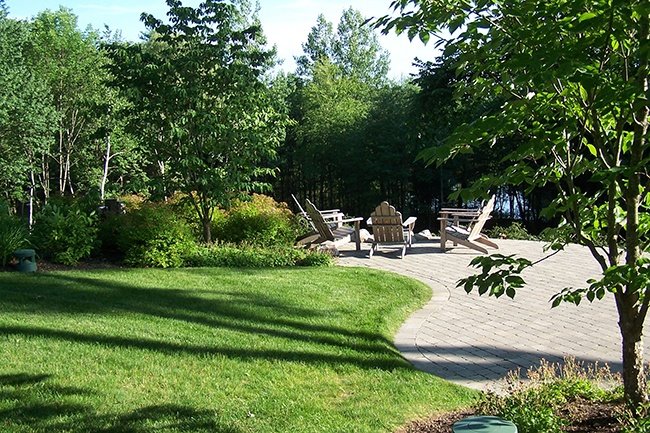
Here are three things that will help you think outside the box when it comes to incorporating lawn so you can have an attractive, unique, and sustainable lawn:
- Make your lawn just one element of several in your landscape
Instead of installing a dominating, rectangular lawn that takes lots of time to be mowed, watered, fertilized, de-weeded, and raked, think about significantly reducing the size of it and designing similarly-sized shrub and flower beds that will complement the open green space. Design the beds to push into the lawn area, reducing the amount of high-maintenance grass area and adding shape, texture, color and depth to your landscape. By breaking up the big, rectangular lawn with interesting plant beds and other features something curious happens – your lawn actually looks bigger.
- Add “movement” to your landscaping
By “movement” we mean adding gentle curves to the shape of your planting beds as a way to invite the eye to follow along and explore various aspects and areas of your property. As mentioned in the first tip, replace boxy, straight-edged lawn areas and rectangular plant beds with more organically flowing borders that naturally integrate and harmonize with a reduced lawn area. By adding more shapes, definition, and movement to your landscaping, you wind up with a much more interesting and beautiful landscape that is also more sustainable.
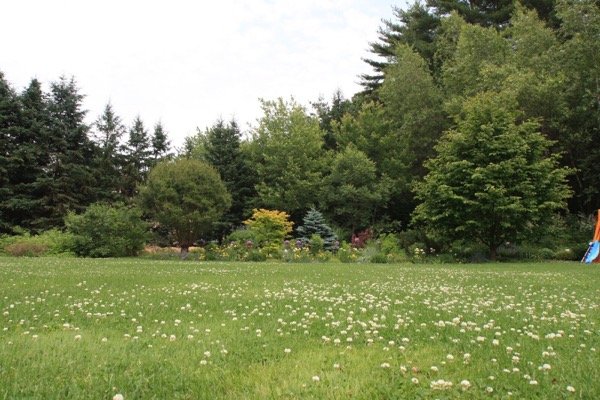
- A beautiful lawn can be more than turf grasses
As we mentioned at the beginning of this post, lawns are not native things. The concept alone of growing a monoculture of one plant type that needs to be mowed regularly to function suggests that it will be input heavy and difficult to sustain. In areas where these grasses grow natively, they are left to grow and seed freely to ensure a continued revitalization with fresh new plants. Because we like our lawns neatly mown to a uniform height, we need to do work to get them that way. That work comes in the form of mowing, regular watering, fertilizing and often adding chemicals to combat weeds and bugs. Bio-engineered turf species have been introduced with the promise that they will have pest & disease tolerance as well as drought tolerance. They are even being engineered like many of our crops – to be “RoundUp ready” – meaning weed killers can’t kill them. The repercussions of these introductions could be devastating to our ecosystem.
What many people don’t know is that when maintained lawns first became popular at the end of the 19th century they included plants other than grass, such as clover, thyme and chamomile. These more diversely planted “lawns” were highly prized as indicators of the homeowner’s wealth and status. Aggressive marketing by grass seed and fertilizer companies convinced homeowners that species such as clover were weeds – plants that needed to be eliminated and kept at bay in favor of uniform, boring, monoculture lawns.
It’s time to take back our lawns and encourage the variety and the inclusion of grass alternatives that can grow more easily and sustainably – attractive, hardy, and helpful plants such as Dutch white clover.
What makes clover such as good addition to any lawn is that it is a natural fertilization assistant. Clover is a “nitrogen-fixer” – a type of plant whose roots harbor certain bacteria that extract nitrogen from the air and add it to the soil where it’s available for plant growth. As a result, homeowners with clover in their lawns not only end up with a greener, lusher lawn, they end up spending less time and money fertilizing.
Tweetable Tip: Add movement to your landscape by adding gentle curves to the shape of your planting beds http://ctt.ec/QZ2KP+
If you’re thinking about adding or making changes to your lawn, remember these three unconventional lawn design tips -- add complementary elements, movement, and alternative plants to your lawn -- and you’ll be thrilled with the results.
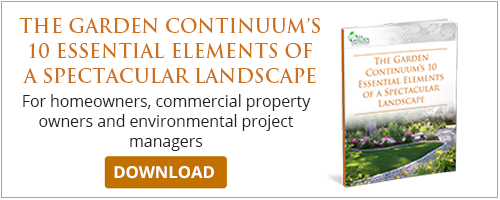
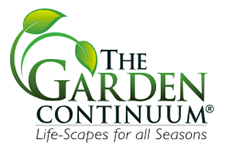
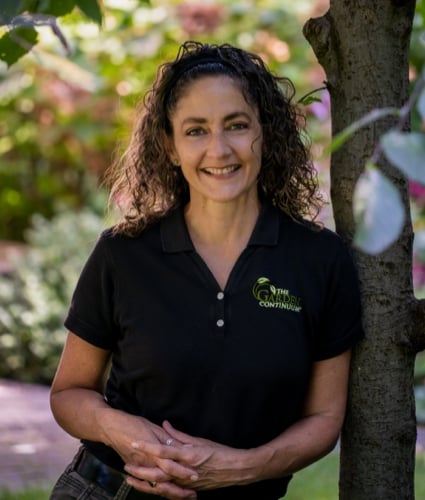
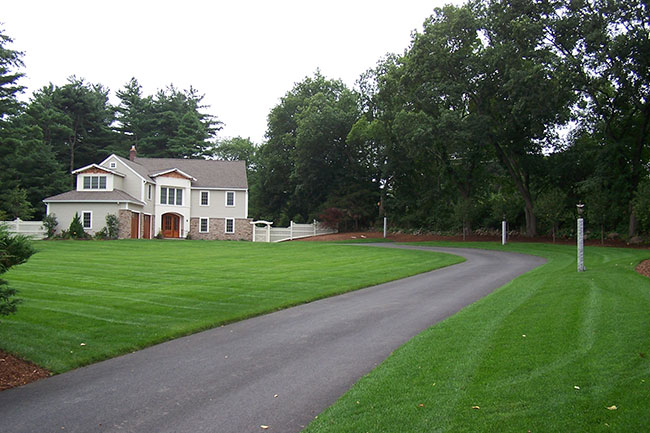



Leave a comment